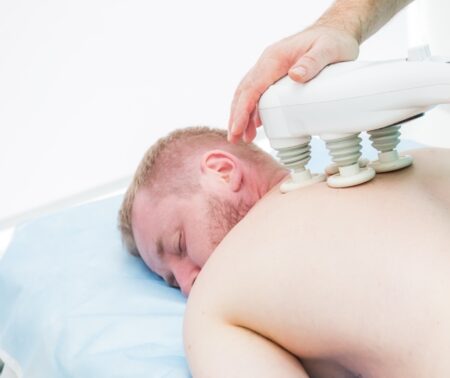Spinal and nerve decompression are critical treatments for alleviating pain and restoring function in individuals with nerve or disc-related conditions. Spinal decompression, whether surgical or non-surgical, focuses on relieving pressure on the spinal discs, which can help with ailments like herniated discs, spinal stenosis, and sciatica. Non-surgical decompression often involves motorized traction that gently stretches the spine, easing disc pressure and reducing associated pain.
Nerve decompression surgery targets peripheral nerves compressed by surrounding tissues, often due to injury or conditions like carpal tunnel syndrome or thoracic outlet syndrome. This outpatient procedure alleviates symptoms such as burning pain, tingling, and muscle weakness by removing the source of nerve entrapment, offering quick recovery and lasting relief. Together, these treatments provide versatile solutions for pain management and improved mobility.
Conditions and Symptoms Addressed by Decompression
Nerve decompression can effectively treat a range of conditions, including:
- Sciatica: Spinal decompression relieves pressure on the sciatic nerve, easing symptoms such as shooting pain down the leg.
- Herniated Discs: For those suffering from a bulging or herniated disc, decompression therapy can help realign the spine and reduce pressure on the affected area.
- Carpal Tunnel Syndrome: Nerve decompression surgery is particularly effective for patients with carpal tunnel syndrome, relieving symptoms of tingling, numbness, and pain in the hands and wrists.
Benefits of Nerve Decompression

Nerve decompression offers several benefits for patients in Santa Monica seeking non-invasive or minimally invasive solutions for pain relief:
- Minimally Invasive Options: Many nerve decompression techniques, primarily non-surgical spinal decompression, are less invasive compared to traditional surgery, reducing recovery time and offering a more convenient solution.
- Reduced Pain and Discomfort: By targeting the source of nerve pressure, decompression therapies provide significant relief from symptoms like pain, tingling, and numbness.
- Improved Mobility and Function: Decompression can restore nerve function, allowing patients to easily regain their range of motion and return to their daily activities.
- Outpatient Procedures: Many decompression treatments can be performed as outpatients, making them more accessible and less disruptive to a patient’s routine.
5 Steps to Relieve Pain with Nerve Decompression as Treatment

1) Accurate Diagnosis
Identifying the root cause of nerve compression is the first step in pain relief that works. Healthcare professionals use advanced imaging tools like MRIs and CT scans to pinpoint the exact source of discomfort, whether that be a herniated disc, sciatica, or other conditions like carpal tunnel syndrome.
2) Initiate Non-Surgical Treatment
Once diagnosed, the second step is to initiate non-surgical treatments before considering surgical options. These may include physiotherapy exercises that strengthen the muscles around the affected area, reducing the pressure on the nerve. Pain management strategies such as NSAIDs or corticosteroid injections may be employed to manage inflammation and discomfort.
3) Consider Surgical Intervention
The third step, surgical intervention, might be considered after non-surgical treatments have proven themselves unable to deliver the desired results. Procedures like neurolysis or nerve decompression, such as treatment surgery, can free the nerve from compressive forces, restoring normal nerve function and improving symptoms.
4) Physical Therapy Sessions
Subsequently, the fourth step emphasizes post-operative rehabilitation, which involves physical therapy and exercises carfted to restore mobility and strength. This ensures the nerve heals properly and reduces the risk of recurrence.
5) Long-Term Management and Prevention
Finally, the fifth step focuses on long-term management and prevention strategies, which involve lifestyle modifications. Patients are encouraged to maintain a healthy weight, exercise regularly, and adopt ergonomic practices to prevent future nerve compression scenarios. By following these steps, individuals can effectively manage nerve compression and improve their quality of life.
The Path Forward: Integrating Decompression in Pain Management
As decompression therapies continue to evolve, their integration into comprehensive pain management strategies holds significant promise. These therapies address the core issues causing nerve and spinal compression by relieving pressure, thus facilitating natural healing and improving quality of life. Non-surgical spinal decompression therapy, which uses traction to alleviate pressure on spinal discs, has already demonstrated an 85-90% success rate in reducing intradiscal pressure.
Innovations in this field may include:
- Enhanced traction devices
- Improved nerve monitoring technologies
- Multidisciplinary approaches that combine decompression with other pain relief methods, such as acupuncture and physiotherapy
This holistic approach accelerates recovery. Professionals like Dr. Roy Nissim offer specialized treatments for nerve compression, emphasizing patient-specific strategies that incorporate cutting-edge decompression techniques.
Take the opportunity to live pain-free with Dr. Roy Nissim Chiropractic & Sports Medicine. Our team specializes in identifying and addressing the root causes of your discomfort, not just the symptoms. Experience the same cutting-edge techniques trusted by elite athletes to restore and enhance physical performance. Discover how we can help you overcome pain and achieve your goals today. Contact us today to learn more about our proven nerve decompression methods.





